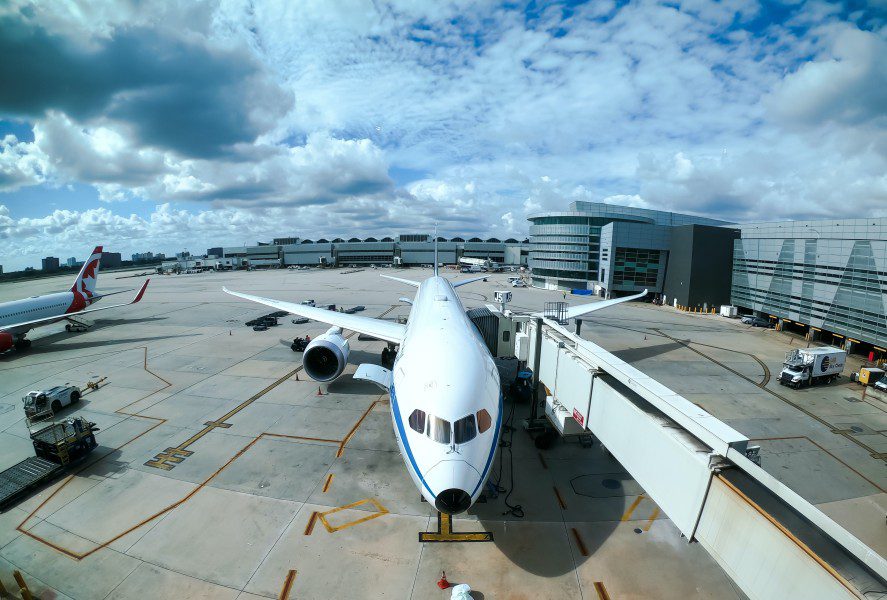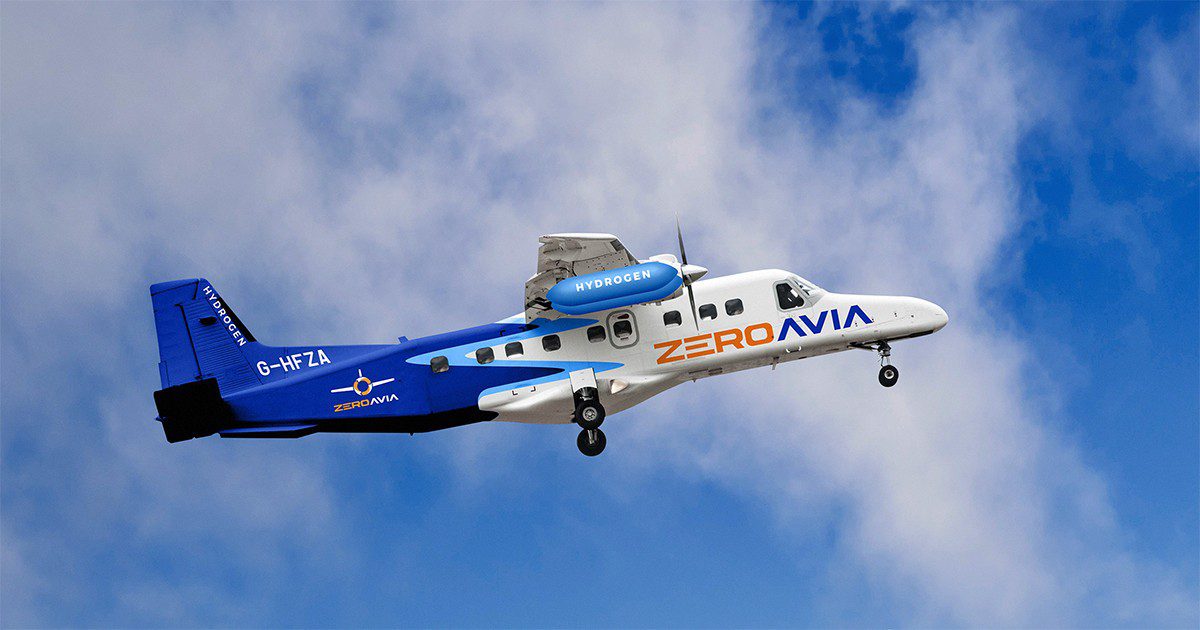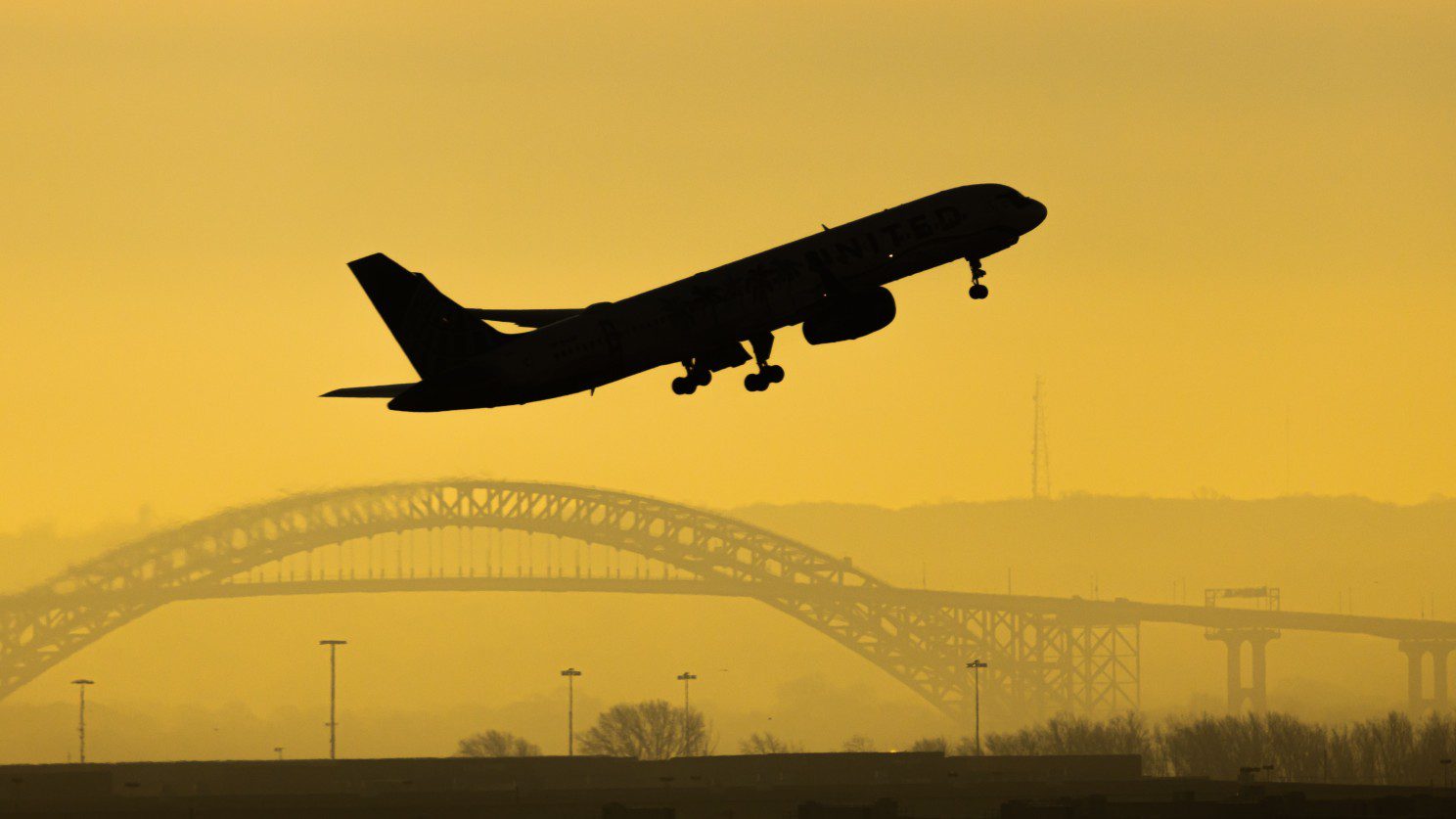The aviation and aerospace industry is ripe for some positive disruption
The aviation and aerospace industry has had a particularly tough time in recent years. While still recovering from the far-reaching and costly impact of Covid-19, it has faced greater pressures and challenges around environmental concerns – all amid an economic crisis.
Yet the industry has continued to push R&D efforts to improve aircraft design and reduce emissions – notably with rapid advancements in hybrid and electric aircraft – and that shows there are also promising opportunities for growth and innovation.
At Calvium, we are particularly interested in the role digital technologies can play in supporting that growth and innovation – both in terms of tackling climate change and helping to achieve net zero goals; and also how they can improve operational efficiencies and place management issues.
Calvium recently attended two of the UK’s key industry events: WEAF’s Annual Expo 2023, and Built Environment Networking’s Airports Development & Future of Aviation Conference, which bring together hundreds of speakers, exhibitors and delegates every year to share knowledge and showcase best practice and innovation.
It is a great opportunity to learn more about evolving sector challenges and opportunities, and find out how Calvium can play a meaningful role now and in future. Here are some of the key themes and takeaways from a jam-packed couple of days – including exciting developments in sustainability, future air mobility and manufacturing.
Current landscape
WEAF member and GKN’s commercial director, Chris Hawkins, gave an overview of the tumultuous backdrop to the current industry situation. The pandemic hit the entire industry very hard with a significant reduction in global air travel and a shrinking of workforces. This ran directly into the current economic crisis and the war in Ukraine, which has seen a sharp hike in energy prices, significant supply chain constraints, and a global labour shortage. On top of this, flights still haven’t reached their pre-pandemic levels, and inflation remains a key issue.
The energy crisis is also accelerating sustainability initiatives, as highlighted by WEAF’s CEO, Colin Turner, in an interview we did with him last year.
Colin explained how the need to reduce energy and logistics costs has had a direct effect with respect to CO2 production. Economic pressures have also forced the industry to consider sustainability as an opportunity for innovative growth and a mechanism to reduce costs.




Sustainability
Environmental sustainability, as you might expect, topped the agenda at both Expos. There appeared to be a general consensus that industry attitudes to ESG are changing, even in the past 12 months, during which the global aviation industry agreed to try to achieve net zero emissions by 2050.
This is being driven by changing consumer attitudes, which is in turn slowly attracting global government intervention. We saw this in April, when France became the first country to implement a ban on certain short-haul flight routes. The Dutch government has also issued the world’s first cap on flights from Schipol airport, the third-busiest in Europe, which will limit the maximum number of flights each year to 440,000 – 12% less than in 2019.
Coming into effect at the end of 2023, the cuts aim to restore “the balance between a well-operating international airport, the business climate and the interests of a better and healthier living environment,” the country’s transport minister, Mark Harbers, said at the time.
In the UK, meanwhile, Manchester Airport is aiming for a net zero target by 2038. This was discussed by the airport’s MD, Chris Woodroofe, at BEN Expo, who explained how Manchester is adopting a twin track approach to achieving net zero. While the airport is aiming for 10% sustainable aviation fuels by 2027 and increasingly focusing on hydrogen, it is not only looking at reducing emissions in planes. The entire footprint of the airport is under scrutiny; Manchester is also looking at EV charging points for all domestic vehicles that come to the airport.
With Gatwick aiming for net zero by 2030, it will be interesting to see whether a bit of healthy competition between airports and their ESG targets will accelerate innovation.
Digital technologies, too, have a clear role to play in enabling and accelerating innovation in sustainability – we have written many times before about how they can help achieve a net zero future and meet crucial Sustainable Development Goals. Yet while rapid innovation feels even more urgent amid our climate crisis, it is essential this is done responsibly and with care, as our CEO Jo Reid explains in this blog here.
Digital technology and innovation
There is undoubtedly a lot of progress being made in this area across the board, which was great to see. Below, I’ve broken down some of the most notable developments and challenges that emerged over both days.
Engines
With hydrogen set to play a key role in the future of aviation, ZeroAvia is one major player ramping up its efforts to drive carbon neutrality. At BEN Expo, the hydrogen-electric aircraft developer’s head of external affairs and marketing, Dominic Weeks, shared exciting developments that should lead to ZeroAvia achieving Certification for planes using hydrogen electric engines by 2025.
In January, the company flew the world’s largest aircraft powered with a retrofitted prototype hydrogen-electric engine. Now, having successfully tested the 19-seat plane, it is looking to power a 40-80-seat aircraft with a range of around 700 nautical miles by 2027.
Airports
At BEN Expo, Andrew Chadwick, Connected Places Catapult’s technology innovation lead (aviation), spoke about the wider context of technology developments related to sustainability around airports. Unmanned electric powered drones and drone ports, autonomous vehicles and air taxis are all gearing up to play a fundamental role in airports of the future. Andrew also highlighted the importance of multi-modal transport connectivity to and from airports to reduce car journeys, as well as using airports as energy hubs, such as for hydrogen.
In addition to the enormous potential of digital technologies to tackle the environmental impact of airports, Calvium is also interested in how they can improve the overall experience of airports, offering potential solutions to numerous operational and consumer challenges, such as: improving data capture of passenger flow, tracking and reporting airport-owned assets and consumer luggage, helping people navigate around these increasingly complex environments. Read more about where we see digital technologies playing a key role at current and future airports.
Aircraft
The futuristic potential of air taxis was expanded on by James Bircumshaw, head of infrastructure acquisitions & partnerships at Skyports. The company is currently working on the Future Flight Challenge, a £300m programme to accelerate advanced air mobility, and has big plans for eVTOL (electric vertical take-off and landing). Skyports is aiming to achieve certification for commercial flights in the next 2-3 years.
Aircraft on landing area. the aircraft is like a helicopter, but the cabin is under a ring with 10 blades like a drone, rather than having one large centrally connected blade above.
WEAF member and Honeywell’s R&D programme manager, Steve Goddard, outlined some of the challenges surrounding the introduction of hydrogen-powered aircraft and the work they are undertaking to overcome them. While offering many benefits – low emissions (water vapour and heat), high energy density, availability (produced from renewable sources) – there is a need for particularly high hydrogen purity levels, and so there is currently a lot of development work looking into the thermal management of hydrogen fuel cells.
Manufacturing
After our recent collaboration with Open Bionics, it was fascinating to hear how ‘additive manufacturing’ (the industrial term for 3D printing) is being applied in the aerospace and aviation industries.
HiETA Technologies’ general manager, Giles Corbett, showcased the tremendous potential of additive manufacturing in heat exchange technologies and the resultant efficiencies. Heat exchange technologies are widely used for both cooling and heating various aircraft components, such as gear boxes, hydraulics and auxiliary power units.
Yet he also highlighted the fact that the use of these new technologies and materials meant that while the R&D process can be significantly accelerated, it still has to work within a context of real-world manufacturing operations, which can be exciting but frustrating at times.
At WEAF, Safran Seats’ VP engineering, Barry Rowe, demonstrated how the concerted effort to reduce the industry’s carbon footprint is even extending to the seats that high net worth individuals occupy on long-haul flights.
Given how big business class seats are – one study estimates flying business class emits around three times as much carbon as economy class – Rowe explained that anything that can be done to lightweight them can lead to significant reductions in the overall weight of the payload. The global supplier of aircraft seating is currently looking at modular construction design and exploration of different materials, while still aiming to preserve the quality and feel that high-spending customers expect.
Person taking a photo out of an aeroplane window, with laptop on table – in business class
Final thoughts
It feels like the aviation and aerospace industry is ripe for some positive disruption so it was great to see the myriad developments taking place that have the potential to transform it for the better.
We hope to see this innovation continue apace and will always look for opportunities where we can play our part – whether that is helping to streamline the legacy processes that the industry still so heavily rely on, or turn complex data into easy-to-use tools and interfaces. Collaboration will, of course, be key if the industry is going to achieve its net zero targets by 2050.
Contact Calvium to discuss how we can help you develop digital technologies that have a positive impact on people, place and planet.
